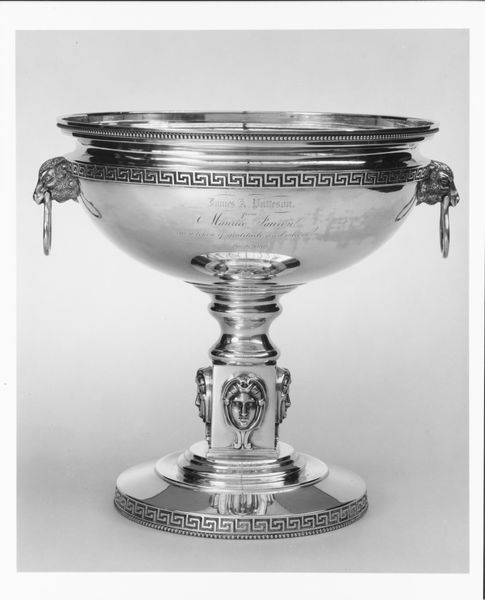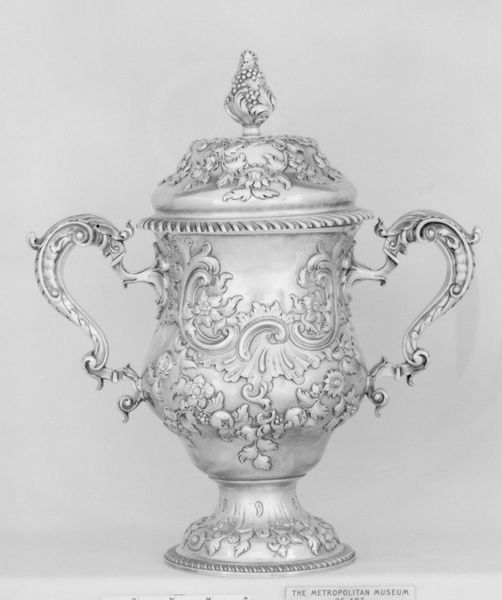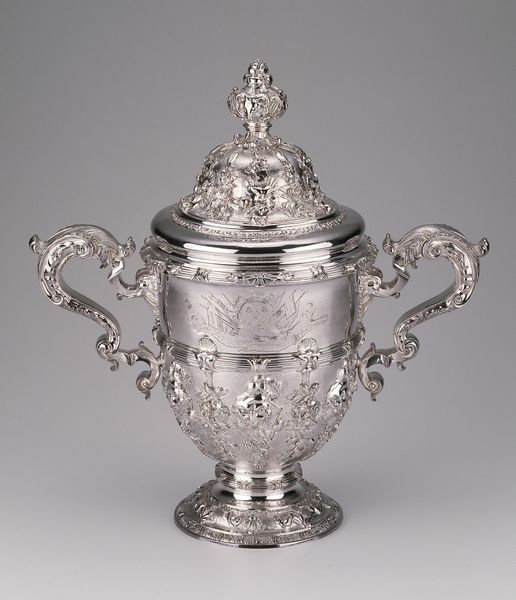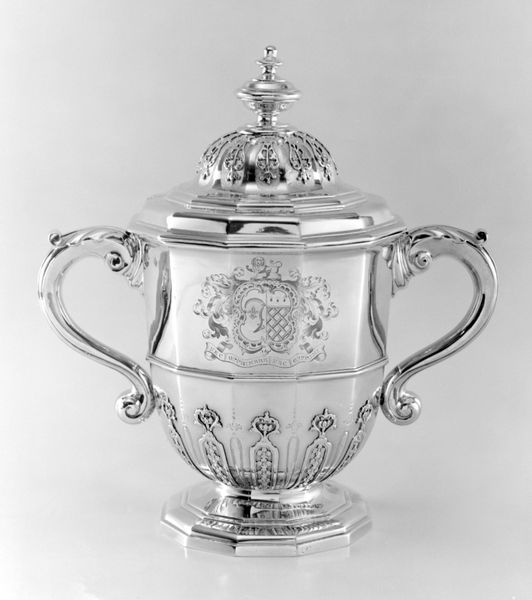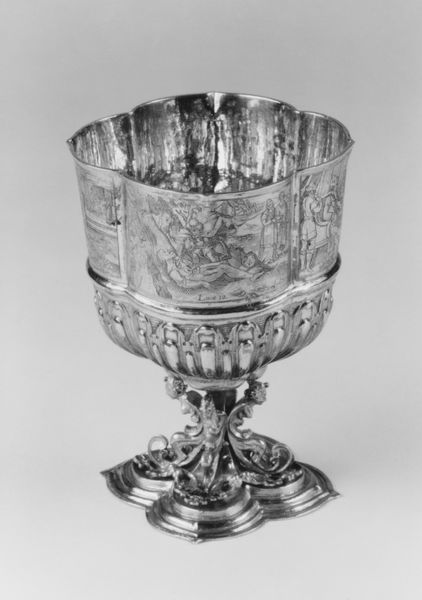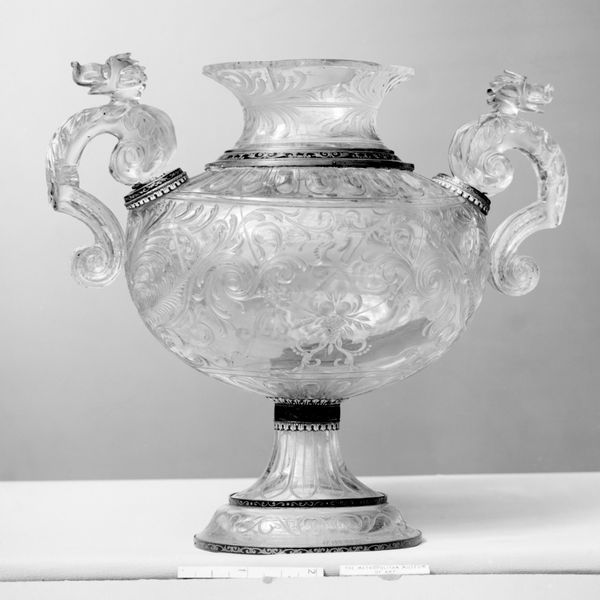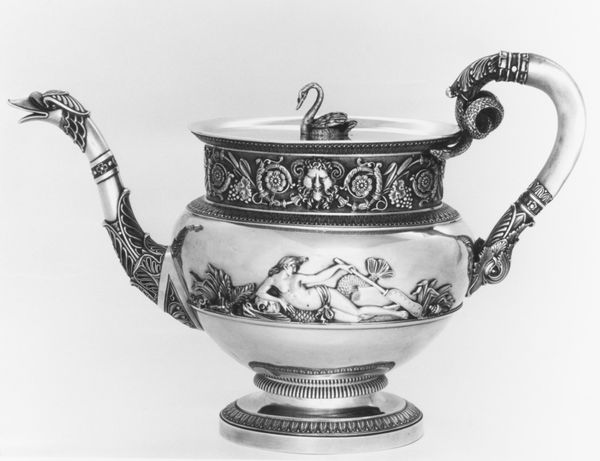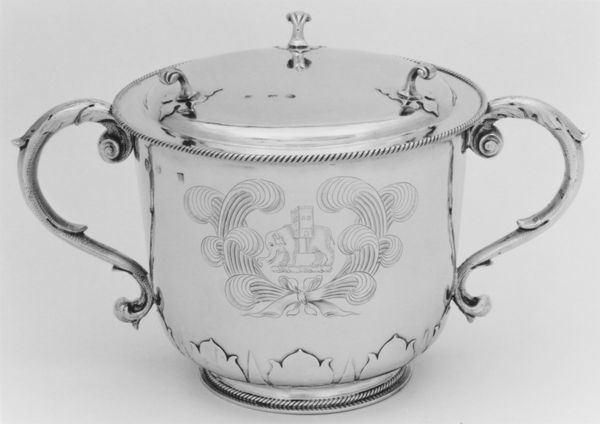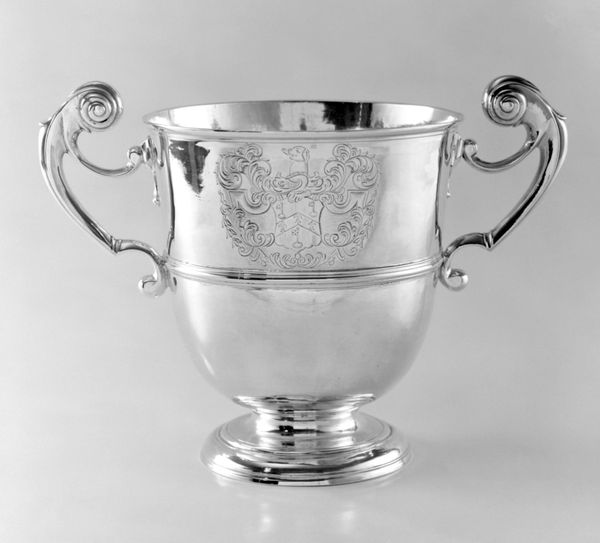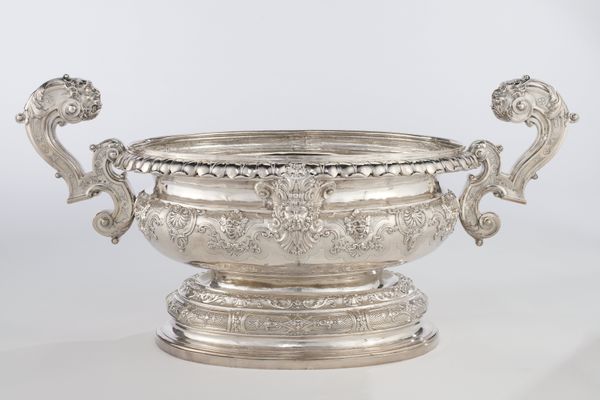
silver, metal, sculpture
#
silver
#
baroque
#
metal
#
sculpture
#
sculpture
#
decorative-art
Copyright: Public Domain
Editor: Here we have the "Monteith," created between 1705 and 1706 by John Leach. It's made of silver and, honestly, the sheer opulence is striking. What statements were these kinds of highly ornate Baroque vessels making at the time? Curator: That’s a very insightful response! Vessels like this, and the ritual surrounding their use, broadcasted wealth and power in a very direct way. These weren't just functional objects; they were status symbols meant to be seen and admired at gatherings and banquets. Consider the context: England was emerging as a major colonial power, and such displays of wealth were integral to solidifying social hierarchies. Have you seen the coat-of-arms displayed on the cartouche? Editor: Yes, I did. Does the coat-of-arms relate directly to the original owner of the monteith? Curator: Precisely. The coat-of-arms provided the key to understanding who this vessel was made for. Think about how heraldry functioned; it was like visual branding, announcing lineage and social standing. Displaying the crest publicly affirmed their position. Museums subsequently acquired pieces to tell similar stories through aesthetic objects. Editor: So, a show of wealth that served almost like… political advertising? The vessel’s material existence created a network of meanings? Curator: Exactly! The politics of imagery played out in everyday objects and these luxurious artworks gave form to aristocratic ideologies. And those ideologies played out through the consumption of valuable resources. Editor: That gives me a new perspective on what’s going on beneath the surface of what I initially perceived to be just ornamentation! Curator: Yes. And next time, think more deeply about *how* it functions and *who* that function benefits in its own historical time.
Comments
No comments
Be the first to comment and join the conversation on the ultimate creative platform.
